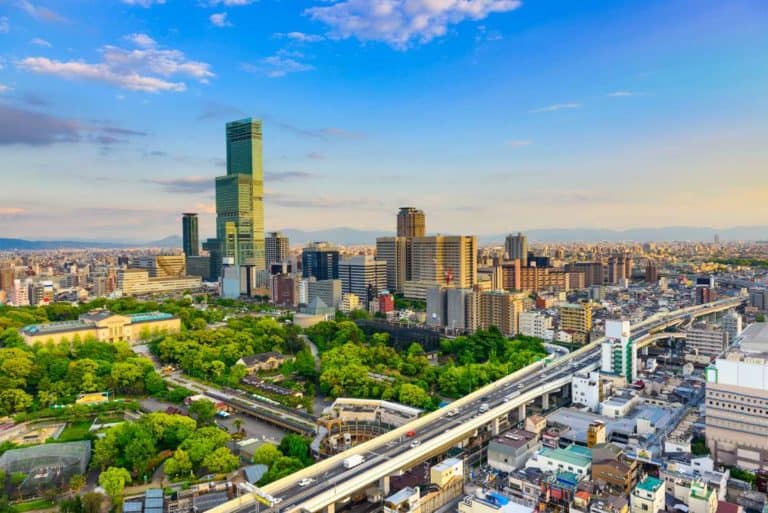Mastering Japan’s Intricate Transport System
Do you think you’ve mastered the subway back home? Well, buckle up! Japan’s transport system is a whole new beast.
Don’t fret, though. We’re here to guide you through the maze of the Japan Rail System, the hustle of Tokyo Metro, and the speed of the Shinkansen.
We’ve got you covered whether you’re biking, busing, or walking.
Get ready to navigate Japan’s intricate transport like a pro and experience the freedom of exploring the Land of the Rising Sun.
Key Takeaways
- Understanding Japan’s rail system enhances travel experience
- Tokyo Metro is one of the most intricate yet efficient subway systems
- City buses are an essential part of Japan’s transport system
- Renting and riding bikes provide a unique perspective and freedom
Navigating the Japan Rail System
You’ll find that understanding Japan’s rail system can significantly enhance your travel experience. It’s not just a mode of transport but a cultural experience in itself.
Imagine speeding through picturesque landscapes on the Shinkansen, or bullet train, at speeds up to 320 km/h. Intricate, yes, but Japan’s rail system is incredibly efficient, timely, and reliable.
You’ve got options, too. The Japan Rail Pass offers unlimited travel on all JR lines nationwide, including bullet trains. It’s a liberating way to explore, unrestrained by schedules or routes.
You’re free to go wherever you desire, whether it’s the bustling metropolis of Tokyo or the serene temples of Kyoto.
Understanding and Using the Tokyo Metro
You’ll often use the Tokyo Metro, one of the world’s most intricate yet efficient subway systems, during your stay in Japan. It’s a sprawling web of interconnected lines, but don’t let the complexity intimidate you.
Remember, the Metro is your gateway to Tokyo’s vibrant culture, bustling streets, and serene temples. It’s the vein of the city, pumping life into every corner.
Let’s consider three main lines:
| Line | Color | Key Stops |
|---|---|---|
| Ginza Line | Yellow | Asakusa, Ginza, Shibuya |
| Marunouchi Line | Red | Tokyo Station, Ikebukuro |
| Hibiya Line | Silver | Roppongi, Tsukiji |
You’ll master this network, embracing the pulse of Tokyo. You’re not just a visitor but an explorer, experiencing every slice of this unique city. Let the Tokyo Metro guide your journey.
Getting Around With City Buses
You’ve mastered the Tokyo Metro, but what about the city buses, an essential part of Japan’s intricate transport system?
Understanding bus routes can be challenging, but you’ll find exploring local neighborhoods rewarding with some practice.
Don’t forget to learn the ticket purchasing process and the nuances of bus etiquette, as these are key to navigating Japan’s public transport like a pro.
Understanding Bus Routes
Most of the time, you’ll find that understanding bus routes in a new city can be quite a challenge. With its intricate web of public transportation, this has become a true adventure in Japan. Don’t let it daunt you; you’re here to embrace the unfamiliar.
Each bus stop displays a detailed route map and, often, an electronic signboard with real-time updates. You’ll need to enter through the rear door, paying the fare as you exit at the front. Remember, it’s counter-clockwise!
To fit in, have your fare ready, and don’t chat on your phone. It’s all about respect, a core value in Japanese culture. Mastering these rules, you’ll navigate Japan’s transport system like a local, experiencing the freedom that comes with understanding.
Ticket Purchasing Process
While getting around with city buses, you’ll need to purchase tickets, and it’s easier than you might think.
In Japan, you’re enveloped by a world of technological advancement. Just imagine:
- Standing at a ticket machine, bathed in its soft, neon glow, buttons humming softly under your fingertips.
- Being greeted by the polite, automated voice guiding you through the process.
- Experiencing the swift, satisfying exchange of yen for tickets is a testament to Japanese efficiency.
- The smell of fresh ink fills your senses when you receive your ticket, warm from the machine.
- Finally, stepping onto the bus, the familiar hum of the engine welcomes you home.
Navigating Bus Etiquette
Once you’re on the bus, it’s crucial to understand that everyone needs their space, and you must always respect that. In Japan, speaking loudly or taking up unnecessary space is considered rude. Be mindful of your backpack and ensure you’re not invading others’ personal space.
Here’s a quick guide to help you navigate through this:
| Action | Acceptable? | Why? |
|---|---|---|
| Talking Loudly | No | It disturbs others |
| Eating | No | It’s considered disrespectful |
| Giving up seats for elderly | Yes | It’s a common courtesy |
| Using Phone | Yes, but silently | Sound can invade someone’s personal space |
A Guide to Riding the Yamanote Line in Tokyo
Understanding the Yamanote Line’s circular route can significantly enhance your sightseeing experience in Tokyo.
It’s your ticket to freedom, allowing you to explore the city’s vibrant culture and history easily. As you traverse this circular route, you’ll find yourself immersed in the bustling energy of Shinjuku, Tokyo’s pulsating heart.
You’ll also be soothed by the tranquillity of Ueno Park, where cherry blossoms dance in the wind. Additionally, you’ll be fascinated by Akihabara’s dynamic blend of tech, anime, and pop culture.
The old-world charm of Yanaka Ginza, a yesteryear shopping street, will also enthrall you. And finally, you’ll be awestruck by the grandeur of Tokyo Station, an architectural marvel.
You’re not just riding a train but embarking on a cultural journey. So hop on, and let the Yamanote Line guide you to Tokyo’s hidden gems.
Tips for Renting and Riding Bikes
You’ll find that renting and riding bikes can give you a unique perspective and freedom when exploring a city. In Japan, you’ll enjoy the flexibility to explore hidden streets, traditional neighborhoods, and rich cultural sites at your own pace.
Bike rentals are convenient, affordable, and abundant.
Be aware of Japan’s strict traffic laws, though. Always use the designated bike lanes; remember, riding under the influence is a no-go. Embrace the freedom of the open road, but respect the meticulous order that defines Japan.
Cycling isn’t just about transport; it’s a window into the rhythm of Japanese life.
Walking as a Mode of Exploration in Japan
Walking in Japan isn’t just a mode of transportation; it’s an immersion into the country’s rich culture and history.
As you navigate the labyrinth of streets, you’ll appreciate the seamless blend of modern and traditional aspects, particularly in historic districts.
It’s an opportunity to savor the benefits of slowing down and truly experiencing the rhythm of Japanese life.
Benefits of Walking
Walking around Japanese cities often improves your fitness and allows you to discover hidden gems you wouldn’t otherwise encounter. From quaint local cafes to age-old shrines tucked away in quiet neighborhoods, a surprise always awaits at every corner.
Here’s why walking can be such a liberating experience:
- Train schedules or bus routes do not constrain you. You set your own pace.
- You have the chance to stumble upon off-the-beaten-path spots.
- You can immerse yourself in the rhythm of local life, watching people go about their day.
- You get a deeper sense of the city’s history and culture, far from the typical tourist trail.
- You’re free to stop and savor the moment whenever you please.
Navigating Japanese Streets
Where can you find the best ramen shop in Tokyo, and how would you navigate the maze-like streets to get there?
You’d start by hopping on the Yamanote Line, Tokyo’s central train loop. With a Suica card, you can ride without fumbling for tickets.
Then, disembark at Sugamo Station. Don’t be intimidated by the intricate alleys; they’re part of Tokyo’s charm. Use your phone’s GPS or ask locals; they’re friendly and willing to help. Follow their gestures and nods, the universal language of goodwill.
Soon, you’ll find yourself in front of Tsuta, the first ramen shop to receive a Michelin star. Savor the freedom of your journey, the aroma of soy-based broth floating in the air, the reward for your adventurous spirit.
Japan’s streets aren’t a puzzle but an invitation to explore.
Historic Districts Exploration
You’ll encounter numerous historic districts in Japan, each offering a unique glimpse into the country’s rich past.
The subtle hum of the Shinkansen as you zip from Tokyo to Kyoto brings a sense of anticipation. The intricate transport system that effortlessly marries modern efficiency with tradition magnifies each district’s charm.
- The Shibamata district, with Edo-style buildings and temples, whispers tales of samurais and shoguns.
- In Kyoto’s Gion district, the clatter of geta sandals on stone sends echoes of geishas.
- Yokohama’s Motomachi district beckons with a fusion of Japanese and Western architecture.
- With its preserved samurai and geisha districts, the Kanazawa district breathes history.
- With its iconic Senso-ji temple, Asakusa paints a vibrant picture of Tokyo’s past.
Your journey through these historic districts isn’t just a trip; it’s a time travel, offering you the freedom to explore Japan’s history at your own pace.
Mastering the Use of Japan’s Shinkansen or Bullet Train
Despite the speed of the Shinkansen, you won’t feel much of a jolt because of its advanced technology.
This jewel of Japanese engineering cruises at speeds up to 200 mph, yet your coffee won’t spill. It’s the epitome of efficiency and comfort and your ticket to explore Japan’s rich tapestry beyond the well-trodden paths.
You’ll appreciate the punctuality; these bullet trains are rarely more than a minute off schedule. Navigating the platforms might seem daunting, but you’ll find English signs and announcements. Don’t be shy to ask the ever-helpful staff or locals.
Mastering the Shinkansen, you’re not just joining the commuter rush. You’re embracing a slice of Japanese culture, gaining a sense of freedom to roam this mesmerizing land.
Frequently Asked Questions
What Are Japan’s Most Popular Ferry Routes, and How Can I Book a Ticket?
You’re curious about Japan’s popular ferry routes! Hakodate-Aomori and Miyajima-Hiroshima are top choices. You can book tickets online or at ferry terminals. It’s simple, allowing you to explore at your own pace.
How Can I Use Ride-Sharing Apps Like Uber in Japan?
You can use Uber in Japan, but it’s not as prevalent. Preferably, pick up public transport. It’s punctual, pervasive, and perfectly suits the pace of Japanese journeys. Remember, respecting the rules is required.
What Are Some Etiquette Rules to Keep in Mind While Using Public Transportation in Japan?
While using Japan’s public transport, remember to be quiet, don’t eat, and give up your seat for the elderly. Always line up, don’t rush, and keep your phone silent. Respect others’ personal space.
Are There Any Unique or Historic Forms of Transport Worth Trying in Japan?
You’ll love the historic rickshaws in Asakusa or Kyoto. Don’t miss the streetcars in Hiroshima either. They’re not just transport; they’re time machines, taking you back to a different era. Enjoy the ride!
How Accessible Is Japan’s Transport System for People With Disabilities?
You’ll find Japan’s transport system quite accessible for people with disabilities. They’ve integrated ramps, lifts, tactile paving, and attendants for assistance. It’s not perfect, but they’re continually improving.
Conclusion
So, you’ve traversed the maze of the Tokyo Metro, soared on the Shinkansen, and even cycled the serene streets. You’ve mastered the rhythm of Japan’s complex transport system, a vibrant dance between tradition and innovation.
As you walk the last mile home, the setting sun paints the sky sakura pink. You’ve not just moved through Japan; you’ve become part of its pulsating, ever-moving heartbeat. And isn’t that the true essence of travel?






